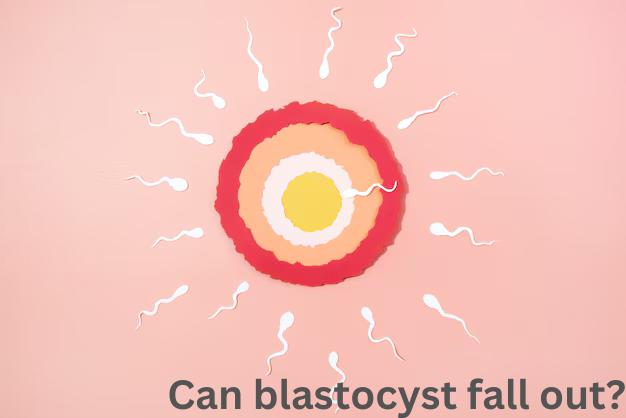Can blastocyst fall out?
A common concern among women undergoing IVF is the fear of the blastocyst falling out after transfer. This worry often stems from a lack of understanding about the delicate process of implantation. Let's delve into the details to dispel this misconception.
What is a Blastocyst?
A blastocyst is a tiny ball of cells that develops from a fertilized egg. It's a crucial stage in the early development of an embryo. After fertilization, the egg undergoes several cell divisions to form a blastocyst.
The IVF Process: A Brief Overview
In IVF (In Vitro Fertilization), eggs are retrieved from the ovaries and fertilized with sperm in a laboratory setting. The resulting embryos are then carefully monitored. After a few days, the healthiest embryo (often a blastocyst) is selected for transfer back into the uterus.
Can a Blastocyst Fall Out?
The short answer is no, a blastocyst cannot fall out of the uterus. Here's why:
Uterine Environment: The uterus is a muscular organ designed to hold and nurture a developing embryo. Its walls are lined with a soft, receptive tissue called the endometrium, which is specifically prepared to receive the blastocyst.
Implantation Process: When the blastocyst is transferred, it's placed within the uterine cavity. The goal is for it to implant into the endometrium. Implantation is a complex process involving a series of biological interactions between the blastocyst and the uterine lining. Once implantation occurs, the blastocyst becomes securely embedded in the uterine wall.
Catheter Placement: During the transfer procedure, a thin catheter is carefully inserted through the cervix into the uterus. The blastocyst is then gently deposited near the uterine lining. The catheter is designed to minimize any risk of dislodging the embryo.
Post-Transfer Care: Tips for Success
While a blastocyst cannot fall out, it's important to follow your doctor's post-transfer instructions. These may include:
Rest and Relaxation: Avoid strenuous activities or heavy lifting for a few days.
Medication: Take any prescribed medications as directed.
Avoid Stress: Try to manage stress through relaxation techniques like meditation or deep breathing.
Regular Check-ups: Attend follow-up appointments with your doctor to monitor your progress.
Addressing Common Concerns
Sneezing or Coughing: It's perfectly normal to sneeze or cough. These actions are unlikely to affect the blastocyst's position.
Sexual Activity: Your doctor will provide specific guidelines regarding sexual activity after the transfer.
Travel: If you have a long-distance journey planned, discuss it with your doctor. They can advise on whether it's advisable to travel during the early stages of pregnancy.
Remember, every IVF journey is unique. While the fear of a blastocyst falling out is understandable, it's important to focus on the positive aspects of the process. With the support of your healthcare team and a positive mindset, you can increase your chances of a successful pregnancy.
If you're considering IVF or have further questions about the process, please consult with the experts at New World Fertility Centre in Delhi.
FAQs
1: Can a blastocyst fall out after implantation?
No, once a blastocyst successfully implants in the uterine lining, it cannot simply fall out. The implantation process is designed to secure the blastocyst firmly within the uterus, allowing it to receive the necessary nutrients and support for development.
2: What is a blastocyst?
A blastocyst is an early-stage embryo that forms about five to six days after fertilization. It consists of two main parts: the inner cell mass, which develops into the fetus, and the outer layer called the trophoblast, which forms part of the placenta.
3: How does implantation occur?
After fertilization, the blastocyst travels to the uterus, where it attaches itself to the uterine lining in a process called implantation. This is a critical step in establishing a successful pregnancy, as it allows the blastocyst to embed itself in the nourishing uterine tissue.
4: What if implantation is unsuccessful?
If the blastocyst fails to implant successfully, it may lead to what is known as an early pregnancy loss or chemical pregnancy. This can occur shortly after a positive pregnancy test, where the embryo does not continue to develop.
5: Are there any risks associated with implantation?
Yes, while implantation is typically successful, factors such as hormonal imbalances or chromosomal abnormalities can lead to complications. In rare cases, a blastocyst may implant outside the uterus, resulting in an ectopic pregnancy, which requires immediate medical attention.

 Oct-09-2024
Oct-09-2024